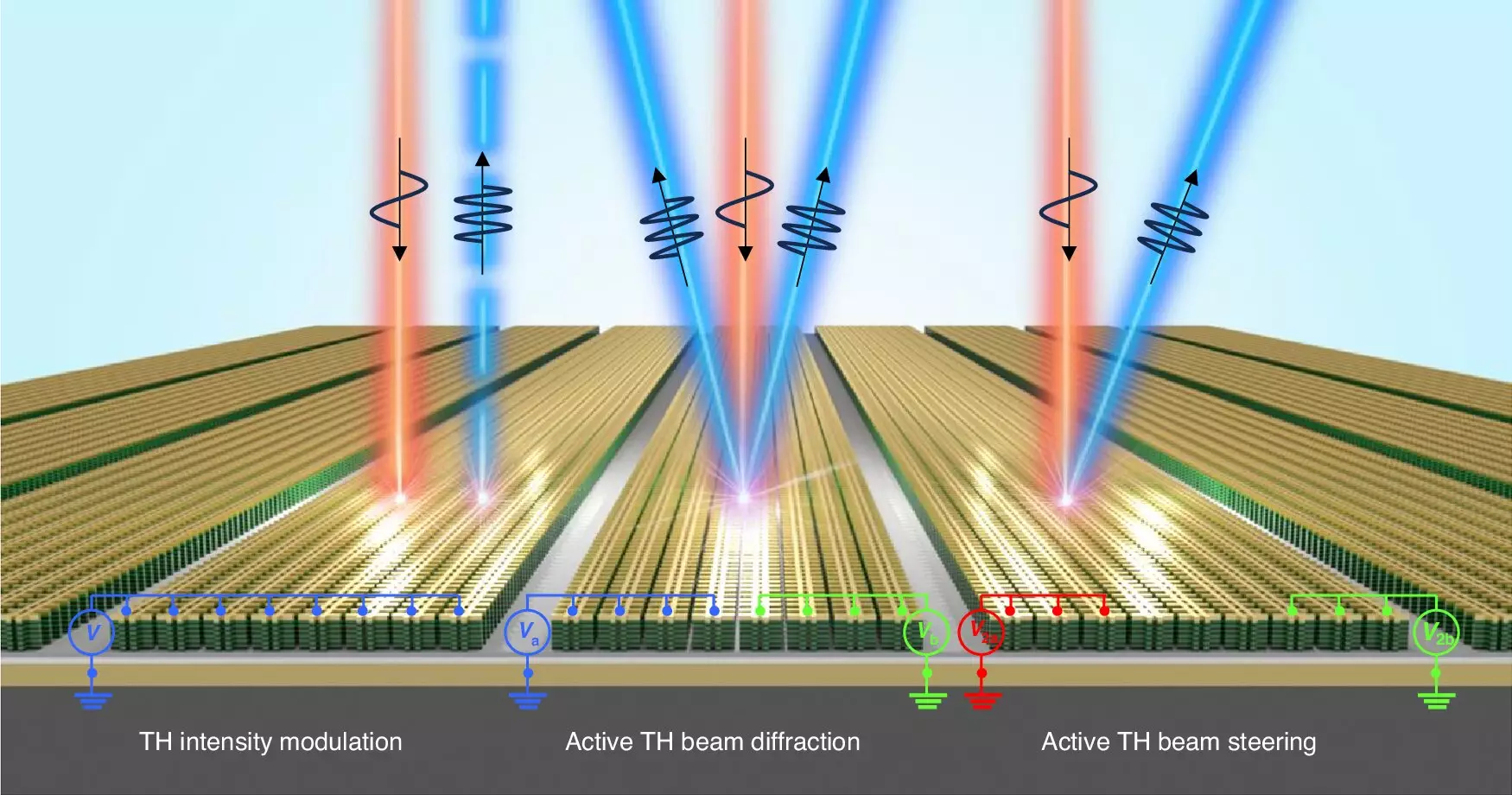Recent breakthroughs in nonlinear optical metasurfaces signify a monumental leap in optics and photonics, with far-reaching implications for communication technologies and medical diagnostics. This transformative technology, which involves designing structures that are smaller than the wavelength of light itself, represents a critical evolution in the way we manipulate and utilize light. The research, spearheaded by Professor Jongwon Lee from UNIST’s Department of Electrical Engineering, has unveiled innovative techniques for creating electrically tunable third-harmonic generation (THG).
The team’s pioneering work, detailed in the journal *Light: Science & Applications*, marks a crucial step in establishing effective means of modulating the THG signal. Achievements comprised an impressive 450% modulation depth and an extraordinary 86% reduction in zero-order THG diffraction. This is achieved through the integration of intersubband polaritonic metasurfaces with multiple quantum wells (MQWs). Such progress is significant not only for its technical findings but also for its broader implications in areas such as quantum technology and adaptive optics. Notably, the introduction of phase gradients allows for advanced beam steering capabilities, indicating that these metasurfaces could lead to robust flat optical devices with diverse functionalities.
Nonlinear optics holds immense potential for enhancing information capacity by generating multiple wavelengths from a singular light source. This technology expands upon conventional laser systems by enabling more complex data transmission methods. The difference can be likened to the fundamental technology of green laser pointers but taken to the next level, presenting vast opportunities for novel applications. For example, the prospect of designing ultrathin optical devices, comparable to paper in thickness, pushes the limits of what is possible with current optical instrumentation.
One of the standout features of this innovative metasurface technology is its ease of electrical modulation, which had been a significant challenge in previous models. The research team has achieved a major milestone by introducing the first-ever voltage-controlled second-harmonic generation (SHG). This groundbreaking technology allows for independent control over the intensity and phase of the generated light, a feature that enhances operational versatility.
Professor Lee underscored the innovative nature of this work, stating, “This advancement allows for unprecedented control of light.” With the ability to govern the intensity and phase through electrical means, this technology opens up exciting new avenues for applications such as cryptography, dynamic holography, next-generation optical sensors, and quantum communication systems.
As researchers like Seongjin Park note, the defining characteristics of these optical metasurfaces are rooted in the semiconductor layers and metallic structures employed. This underscores the importance of material science in advancing optical technology. The work done by Professor Lee and his research team lays the groundwork for future explorations into versatile light manipulation techniques that promise to redefine how we utilize light in advanced technologies. This combination of innovation and scientific inquiry heralds a new era that could revolutionize various fields, making the potential applications virtually limitless.


Leave a Reply